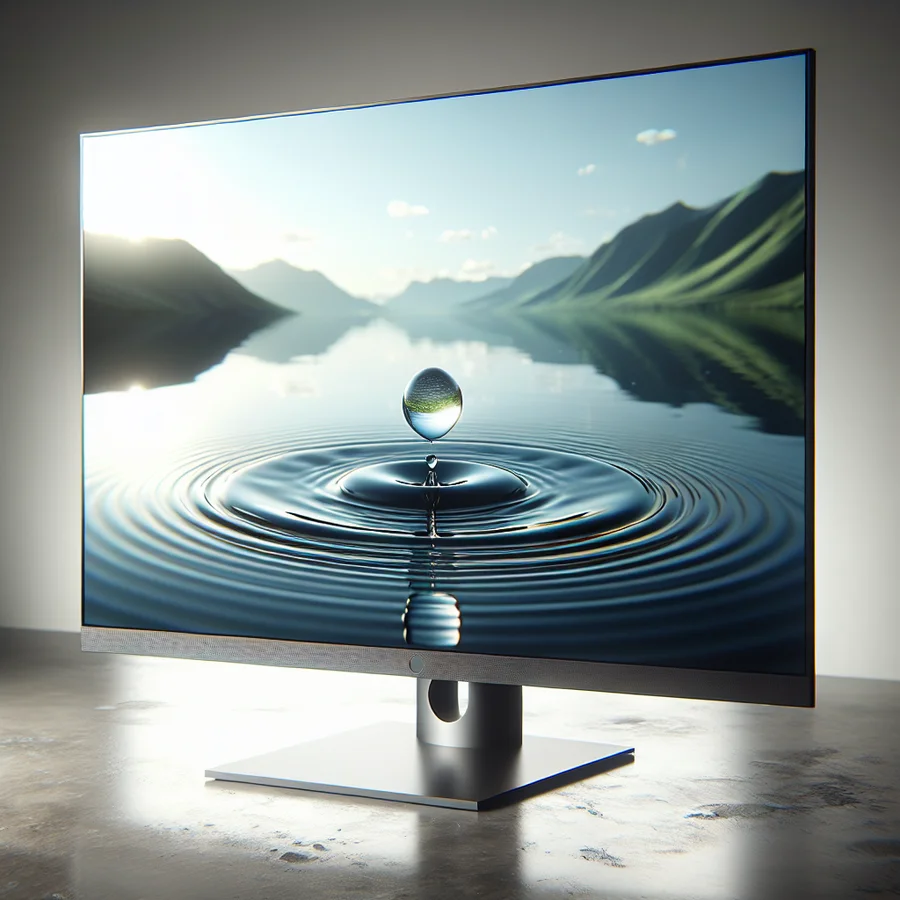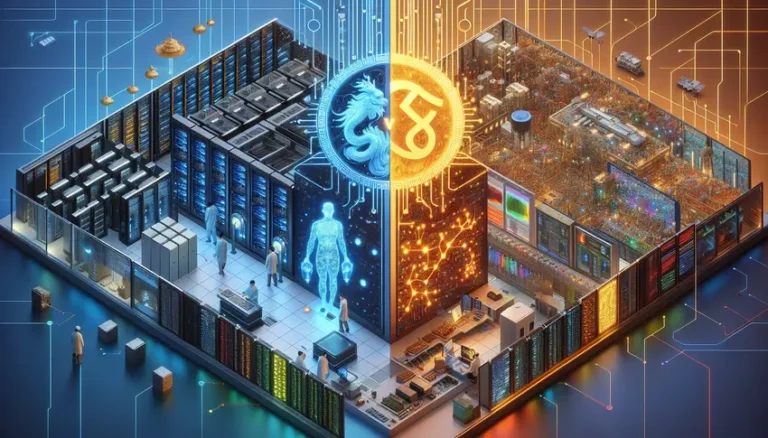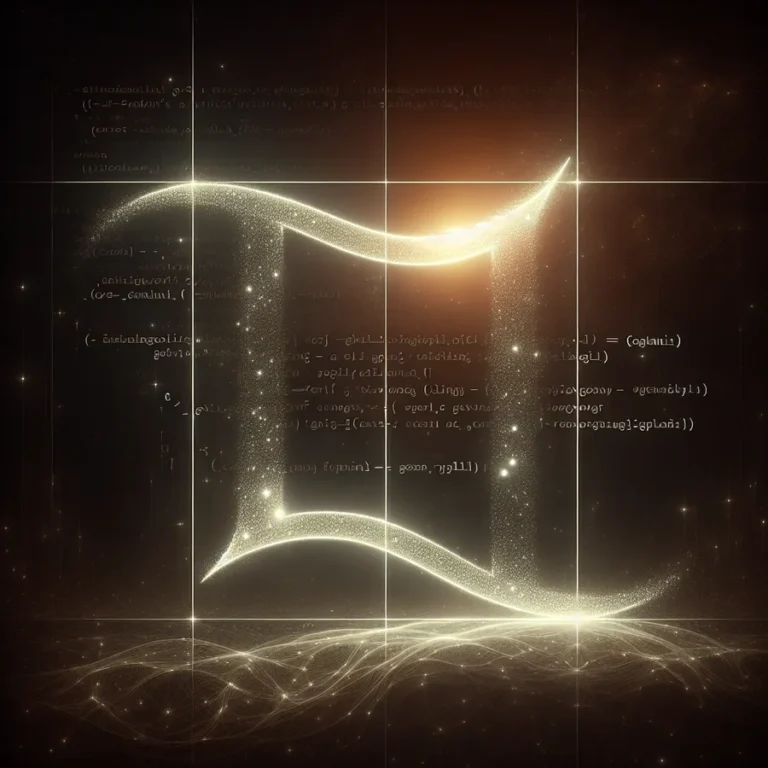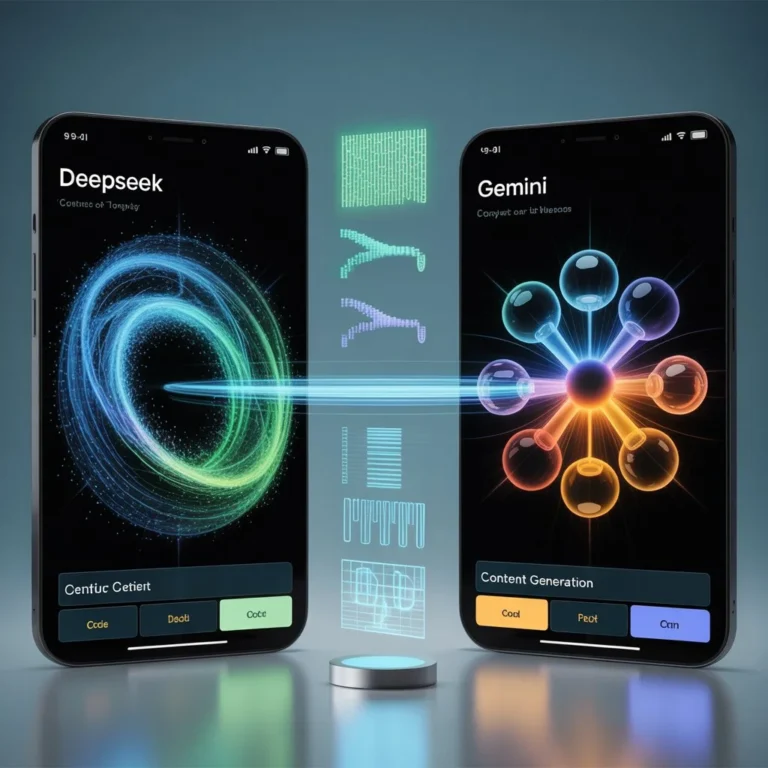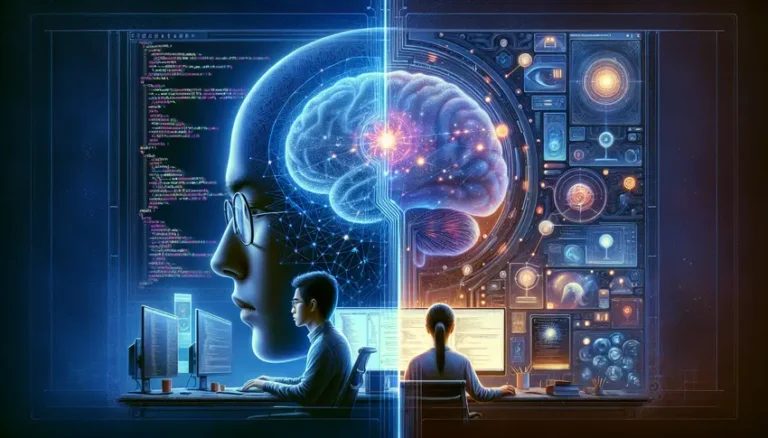Exploring Google’s Veo 3: The Future of Text-to-Video AI
Imagine turning your wildest ideas into stunning videos with just a few words. That’s the promise of Google’s Veo 3, the latest leap in text-to-video AI technology. This guide dives into Veo 3, exploring its capabilities, potential impact, and what it means for the future of content creation.
Google’s Veo 3 is not just another AI tool; it’s a potential game-changer for filmmakers, marketers, and anyone who wants to bring their stories to life. We’ll explore how it works, what makes it special, and how you can potentially use it to unlock new levels of creativity.
What is Google’s Veo 3? Unveiling the Power of Text-to-Video AI
Google’s Veo 3 is a state-of-the-art video generation model developed by Google DeepMind. It takes text prompts and turns them into high-quality videos, complete with audio. This means you can describe a scene, and Veo 3 will generate a video that matches your description. It’s like having a virtual film crew at your fingertips!
Veo 3 builds upon previous models like Veo 2, offering significant improvements in realism, prompt adherence, and creative control. It’s designed to empower filmmakers and storytellers by making video creation more accessible and efficient.
Key Features of Google’s Veo 3
Veo 3 boasts a range of impressive features that set it apart from other text-to-video AI models. Let’s take a closer look at some of the most notable:
- High-Quality Video Generation: Veo 3 can generate videos in up to 4K resolution, ensuring crisp and detailed visuals.
- Realistic Physics and Audio: The model understands real-world physics, creating realistic movements and interactions within the generated videos. It also generates audio natively, including sound effects, ambient noise, and even dialogue.
- Improved Prompt Adherence: Veo 3 is better at understanding and following text prompts, resulting in videos that closely match the user’s instructions.
- Creative Control: Users have more control over the creative process, allowing them to fine-tune the generated videos to achieve their desired aesthetic.
- Image-to-Video Generation: Veo 3 can also generate videos from existing images, opening up new possibilities for animation and visual storytelling.
These features combine to make Veo 3 a powerful tool for video creation, offering a blend of automation and creative control.
How Does Veo 3 Work? A Simplified Explanation
At its core, Veo 3 uses a complex neural network trained on a massive dataset of videos and text descriptions. This allows it to learn the relationships between words and visuals, enabling it to generate videos that correspond to specific prompts.
Think of it like this: imagine you’re teaching a child to draw. You show them many pictures and tell them what each picture represents. Eventually, they learn to associate certain words with certain images and can create their own drawings based on your instructions. Veo 3 works in a similar way, but on a much larger and more sophisticated scale.
The model uses diffusion, converting random noise into coherent text or code, similar to how current models work in image and video generation.
Note: The exact technical details of Veo 3 are complex and constantly evolving, but this simplified explanation provides a general understanding of how it works.
Exploring the Capabilities of Google’s Veo 3: From Prompts to Production
Google’s Veo 3 is more than just a technical marvel; it’s a versatile tool with a wide range of potential applications. Let’s explore some of the ways it can be used to create compelling video content.
Generating Videos from Text Prompts: Unleashing Your Imagination
One of the primary capabilities of Veo 3 is its ability to generate videos from text prompts. This allows users to describe a scene, action, or concept, and have Veo 3 bring it to life in video form.
For example, you could type in a prompt like “A wise old owl flying through a moonlit forest” and Veo 3 would generate a video of exactly that. The level of detail and realism in the generated video is often astounding, showcasing the model’s advanced understanding of natural language and visual semantics.
Reminder: The quality of the generated video depends heavily on the clarity and detail of the text prompt. The more specific you are, the better Veo 3 can understand your vision and create a video that matches your expectations.
Image-to-Video: Animating Still Images
In addition to text-to-video generation, Veo 3 can also create videos from existing images. This opens up exciting possibilities for animating still images, creating dynamic visuals from static content.
Imagine you have a beautiful photograph of a sunset. You could upload that image to Veo 3 and ask it to create a short video that adds subtle movement to the clouds, reflects light on the water, and brings the scene to life. This can be a powerful way to enhance existing visuals and create engaging content.
Agoda is testing Imagen and Veo on Vertex AI to create visuals, allowing teams to generate unique images of travel destinations which would then be used to generate videos.
Adding Audio and Dialogue: Creating Immersive Experiences
Veo 3 goes beyond just visuals; it also generates audio natively. This includes sound effects, ambient noise, and even dialogue. This capability adds a new level of immersion to the generated videos, making them more engaging and realistic.
For example, if you generate a video of a bustling city street, Veo 3 can add the sounds of traffic, pedestrians, and construction, creating a vibrant and realistic soundscape. If your video includes characters, Veo 3 can even generate dialogue and lip-sync it to the characters’ movements.
Note: The audio generation capabilities of Veo 3 are still under development, but they already offer a significant improvement over previous text-to-video AI models.
Director-Level Camera Control: Fine-Tuning Your Shots
Veo 3 offers users a surprising degree of control over the “camera” within the generated videos. You can specify camera movements like panning, tilting, zooming, and tracking, allowing you to create professional-looking shots.
This level of control is particularly useful for filmmakers and video editors who want to achieve a specific visual style or create a particular mood. It allows you to think of Veo 3 not just as a video generator, but as a virtual camera operator.
The Impact of Google’s Veo 3: Transforming Industries and Empowering Creators
Google’s Veo 3 has the potential to revolutionize various industries and empower creators in new and exciting ways. Let’s explore some of the potential impacts of this technology.
Democratizing Filmmaking: Making Video Creation Accessible to All
One of the most significant impacts of Veo 3 is its potential to democratize filmmaking. Traditionally, video creation has been a complex and expensive process, requiring specialized equipment, skilled personnel, and significant time and resources.
Veo 3 lowers these barriers to entry, making it possible for anyone with a computer and an internet connection to create high-quality videos. This can empower small studios, independent creators, and even individuals to bring their stories to life without breaking the bank.
Small studios and independent creators can produce high-quality cinematic content without expensive gear or crews.
Revolutionizing Marketing and Advertising: Creating Engaging Content at Scale
Veo 3 can also have a significant impact on marketing and advertising. Businesses can use it to quickly and easily create engaging video content for social media, websites, and other marketing channels.
Imagine a small business that wants to create a video ad for a new product. With Veo 3, they can simply type in a description of the product and the desired message, and the AI will generate a professional-looking video in minutes. This can save businesses time and money while allowing them to create more compelling and effective marketing campaigns.
Mondelez International, which includes brands such as Chips Ahoy!, Cadbury, Oreo, and Milka, is using generative AI to accelerate and enhance campaign content creation, allowing rapid development of consumer-ready visuals at scale for 100+ brands sold in 150 countries.
Transforming Education and Training: Creating Interactive Learning Experiences
Veo 3 can also be used to create interactive learning experiences. Educators can use it to generate videos that explain complex concepts, demonstrate procedures, or bring historical events to life.
Imagine a history teacher who wants to teach their students about the Roman Empire. With Veo 3, they could generate a video that recreates ancient Rome, showing students what life was like during that period. This can make learning more engaging and memorable.
Unlocking New Creative Possibilities: Empowering Artists and Storytellers
Perhaps the most exciting impact of Veo 3 is its potential to unlock new creative possibilities. By automating many of the technical aspects of video creation, Veo 3 frees up artists and storytellers to focus on their creative vision.
This can lead to new forms of storytelling, new visual styles, and new ways of expressing ideas. Veo 3 is not just a tool; it’s a collaborator that can help artists and storytellers push the boundaries of what’s possible.
Accessing and Using Google’s Veo 3: Getting Started with Text-to-Video AI
Google’s Veo 3 is currently available through a few different channels, each with its own requirements and features. Let’s explore how you can access and start using this powerful technology.
Google AI Ultra Subscription: Early Access to Veo 3
One way to access Veo 3 is through a Google AI Ultra subscription. This premium subscription plan offers the highest usage limits and exclusive access to Google’s most capable models and premium features, including Veo 3.
With a Google AI Ultra subscription, you can access Veo 3 through the Gemini app and Flow, Google’s new AI filmmaking tool. This allows you to generate videos with audio and take advantage of Veo 3’s advanced capabilities.
Note: The Google AI Ultra subscription is currently available in the U.S., with more countries coming soon. It costs $249.99 a month, with a special offer for first-time users of 50% off for the first three months.
Vertex AI: Enterprise-Grade Video Generation
Veo 3 is also available on Vertex AI, Google Cloud’s machine learning platform. This allows businesses to access Veo 3’s video generation capabilities at an enterprise level, with the scalability, security, and data governance features required for professional use.
With Vertex AI, businesses can integrate Veo 3 into their existing workflows, customize the model to meet their specific needs, and deploy it on Google’s leading infrastructure. This makes it a powerful solution for marketing, advertising, and other video-intensive applications.
To get started with Veo 3 on Vertex AI, you’ll need to reach out to your Google Cloud account representative.
Google Flow: AI Filmmaking Tool
Flow is Google’s new AI filmmaking tool that is built by and for creatives. It is the only AI filmmaking tool custom-designed for Google’s most advanced models — Veo, Imagen and Gemini. Flow can help storytellers explore their ideas without bounds and create cinematic clips and scenes for their stories.
Flow is available today for Google AI Pro and Ultra plan subscribers in the United States.
Ethical Considerations and Responsible AI Development
As with any powerful technology, Google’s Veo 3 raises important ethical considerations. It’s crucial to develop and use this technology responsibly to mitigate potential risks and ensure that it benefits society as a whole.
Combating Misinformation and Deepfakes
One of the primary concerns surrounding text-to-video AI is the potential for misuse in creating misinformation and deepfakes. Veo 3 can generate realistic videos of people saying or doing things they never actually did, which could be used to spread false information, damage reputations, or even incite violence.
To address this concern, Google DeepMind has implemented several safeguards in Veo 3, including digital watermarking and safety filters. Digital watermarking embeds invisible watermarks into every image and frame that Veo 3 produces, making it easier to identify AI-generated content. Safety filters help protect against the creation of harmful content and adhere to Google’s Responsible AI Principles.
Reminder: It’s important to be aware of the potential for misinformation and deepfakes and to critically evaluate the videos you see online. Look for signs of AI generation, such as watermarks or inconsistencies in the visuals or audio.
Bias and Representation
Another ethical consideration is the potential for bias in the generated videos. If the training data used to develop Veo 3 is biased, the model may perpetuate those biases in its output. This could lead to videos that reinforce stereotypes, exclude certain groups, or misrepresent reality.
To mitigate this risk, Google DeepMind is working to ensure that its training data is diverse and representative of the real world. They are also developing techniques to identify and mitigate bias in the generated videos.
It is important to note that Google does not use customer data to train their models, in accordance with Google Cloud’s built-in data governance and privacy controls. Your customer data is only processed according to your instructions.
Copyright and Intellectual Property
The use of text-to-video AI also raises questions about copyright and intellectual property. Who owns the copyright to a video generated by Veo 3? Can you use copyrighted material in your text prompts without infringing on the copyright holder’s rights?
These are complex legal questions that are still being debated. It’s important to be aware of the potential copyright implications of using Veo 3 and to consult with a legal professional if you have any concerns.
The Future of Text-to-Video AI: What’s Next for Google’s Veo 3?
Google’s Veo 3 is just the beginning of what’s possible with text-to-video AI. As the technology continues to evolve, we can expect to see even more impressive capabilities and applications in the future.
Improved Realism and Fidelity
One area of ongoing development is improving the realism and fidelity of the generated videos. While Veo 3 already produces impressive results, there’s still room for improvement in areas like facial expressions, subtle movements, and complex interactions.
As AI models become more sophisticated and training datasets grow larger, we can expect to see text-to-video AI generate videos that are virtually indistinguishable from real-world footage.
Greater Creative Control
Another area of focus is providing users with greater creative control over the generated videos. This includes features like the ability to customize characters, environments, and camera movements in more detail.
Imagine being able to specify the exact clothing a character is wearing, the precise lighting conditions in a scene, or the specific type of camera lens used to film a shot. This level of control would allow users to create videos that perfectly match their creative vision.
Integration with Other AI Tools
In the future, we can expect to see text-to-video AI integrated with other AI tools, such as image editing software, audio production tools, and animation software. This would create a seamless workflow for creating multimedia content, allowing users to combine the power of different AI models to achieve their desired results.
For example, you could use Veo 3 to generate a basic video, then use image editing software to refine the visuals, audio production tools to enhance the sound, and animation software to add special effects. This would create a truly collaborative and powerful content creation pipeline.
Conclusion: Embracing the Potential of Google’s Veo 3
Google’s Veo 3 represents a significant step forward in the field of text-to-video AI. Its ability to generate high-quality videos from simple text prompts opens up a world of possibilities for filmmakers, marketers, educators, and anyone who wants to bring their stories to life.
While ethical considerations and responsible AI development are crucial, the potential benefits of Veo 3 are undeniable. By democratizing filmmaking, revolutionizing marketing, transforming education, and unlocking new creative possibilities, this technology has the power to shape the future of content creation.
As Veo 3 and other text-to-video AI models continue to evolve, it’s important to embrace their potential while remaining mindful of their limitations and ethical implications. By doing so, we can harness the power of AI to create a more engaging, informative, and creative world.
FAQs About Google’s Veo 3
What is the difference between Veo 2 and Veo 3?
Veo 3 builds upon Veo 2 with improvements in realism, prompt adherence, and creative control. It also introduces native audio generation and higher resolution output.
How can I access Google’s Veo 3?
You can access Veo 3 through a Google AI Ultra subscription or through Vertex AI. A Google AI Pro subscription provides access to Flow with limited access to Veo 3.
What are the ethical considerations of using text-to-video AI?
Ethical considerations include the potential for misinformation and deepfakes, bias in the generated videos, and copyright and intellectual property issues. It’s important to use this technology responsibly and be aware of its potential limitations.
Can Veo 3 generate videos with dialogue?
Yes, Veo 3 can generate videos with dialogue and lip-sync it to the characters’ movements.
What industries can benefit from Google’s Veo 3?
Industries that can benefit from Veo 3 include filmmaking, marketing and advertising, education and training, and entertainment.
